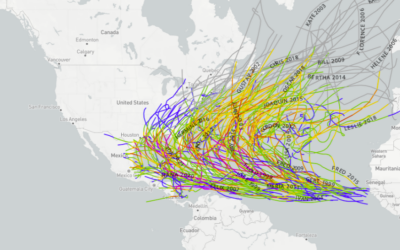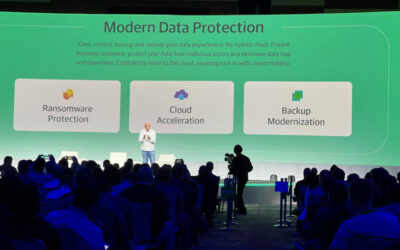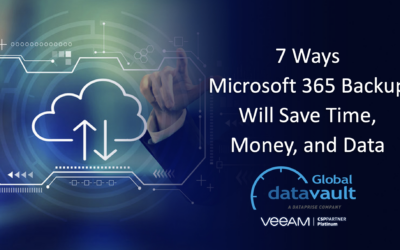
Business continuity in the aftermath of a disaster is likely the stuff of nightmares for an IT manager. Discovering that your disaster recovery (DR) execution falls short of your expectations is devastating, costly, and potentially career-limiting. While keeping all DR processes in-house is tempting, there are compelling arguments for outsourcing to a disaster recovery-as-a-service (DRaaS) provider. We’re walking through some factors that will determine what’s best for your organization, such as disaster recovery parameters, security concerns to consider, and why it may make sense to outsource to specialists instead of maintaining internal control.
DR: What Companies Aren’t Talking About
According to one estimate, just over 50 percent of companies have a documented DR plan, but having a DR plan in place is no guarantee of an iron-clad defense against insider threats and cyber-attacks. Even the best IT teams can underestimate how tricky it can be to recover lost data. When those policies fail or have vulnerability gaps, they lead to data breaches – or worse, a ransomware attack that locks up or deletes entire data assets. Those stories are kept under wraps as much as possible.
No one wants to talk about how much they paid to be operational again in the aftermath of a ransomware attack; the reputation damage alone can take years to overcome. While the ransomware costs are typically quite high, it can be the end for smaller companies with limited budgets. An estimated 60% of small businesses close within six months of being hacked. To rub salt in the wound, 80% of firms are subject to a second ransomware attack after paying to recover their encrypted data.
Conversely, companies with fail-safe recovery plans that have successfully thwarted bad actors are equally hesitant to promote a successful resumption of operations at the risk of taunting hackers with a more attractive challenge.
The Decision: Cloud or On-Premises Backups – How Do They Affect Data Recovery
Once committed to your business continuity/disaster recovery (BCDR) plan and disaster recovery solutions are in your sights, you’re probably deciding between keeping data onsite or moving it to the cloud, either public or private. The danger with keeping your data only on-premises is that your physical location becomes a vulnerability. Should something happen to the facility, a disgruntled employee decides to sabotage your backups, or you have failed hardware, you have no recourse. Additionally, the organization wholly owns the DR responsibility, and recovery can be slow. Organizational downtime is costly, stressful, and negatively impacts customers and employees. Maintaining on-premises hardware adequate for running applications and workloads is also expensive.
Moving from an in-house solution to a cloud-based one changes the way budgets work, shifting from a CapEx financial model to OpEx, which many organizations find beneficial.
Considerations Regarding In-House DR vs. Outsourced DRaaS
We’ll assume at this point that you’ve embraced either the public or private cloud. You still have decisions regarding the accessibility of your cloud data and how quickly you can recover from any loss.
Some in-house teams can keep up with DRaaS; their internal systems are proverbially sealed. This may be because their data is so sensitive that they wouldn’t even consider outsourcing or because a company has a deep bench of technical expertise and a reasonable budget allocation. No outside interference means total security, as the company has complete control over its most critical infrastructure and data.
For most companies, 99 percent of the time, disaster recovery is one of those projects that, by its nature, isn’t on fire – until it is. As crucial as DR is the moment it’s needed, the day-to-day emergencies of an average IT team overshadow even the most well-intentioned DR best practices. It’s tempting to push the maintenance and continual updating of your BCDR plan behind the everyday emergencies that plague all IT departments.
An IT decision-maker tasked with doing “more with less” may not have the luxury of maintaining a separate DR environment with trained staff. Additionally, budgets are diced into other resources like cybersecurity, hardware, and software. No one would deny that these expenses are necessary, but it means that DR gets pushed to the side — despite it being a non-negotiable business component.
Outsourcing DR provides a team of experts dedicated to your company’s best interests in maintaining your backups and their recoverability. If a natural disaster or cyber-attack compromises your business, a DRaaS provider allows IT teams to focus on other areas necessary to return your business to operational status.
DRaaS providers also eliminate the extensive hardware requirements and maintenance that on-premises solutions require. On-demand or consumption-based billing removes the guesswork around deploying and maintaining an additional local or data center or DR hardware and software, two notably significant cost savings.
Enhanced Data Protection (EDP) from Global Data Vault (GDV)
Concerns about security factor into decisions around data protection. While many solutions offer data encryption, GDV takes modern data protection to the next level by adding additional layers of protection—a gap—to cloud backup repositories. This extra component keeps an immutable copy of the backup chain, so any files or systems can be recovered without the fear of corruption or deletion. The best part about EDP is that you don’t incur additional storage costs. When so much of DRaaS relies on storage, the additional value can’t be overstated for budget-conscious leaders.
An Affordable Solution
Data protection is a hot topic for companies and businesses. Increasingly sophisticated threats mean IT executives must consider whether their precautions can fend off the damage. Most in-house teams often can’t fit all responsibilities onto their plates.
Thankfully, disaster recovery doesn’t have to be an either/or situation. It can be an affordable operating expense when you have the right team by your side. With EDP from GDV, you have peace of mind that when your business faces a cyber threat, natural disaster, insider threats, or just human error, your data is safe.
More DRaaS & BaaS Articles
Is your company in hurricane territory? Do these things to protect your data
For much of the country, there are six months of the year where businesses are at risk of the damaging effects of a hurricane. The Atlantic hurricane season for 2022 runs from June 1 until November 30th and while so far it’s been a relatively quiet season, earlier...
Veeam Backup & Replication v12 Features Take Modern Data Protection to the Next Level
Veeam® is a recognized industry leader in modern data protection, with a solutions suite continuously updated to protect businesses from accidental data loss and emerging cyber threats. With its upcoming release of Backup & Replication™ v12, Veeam is again...
Webinar: 7 Ways Microsoft 365 Backup Will Save Time, Money, and Data
Below is a lightly edited transcription of our recent webinar: Microsoft 365 is an amazing suite of tools that helps businesses thrive every day. It's important to know just how far this service goes, how you can extend it in common scenarios, and why Microsoft 365...
Webinar: Data Protection Trends 2022
Our March webinar featured special guest, Jason Buffington, Vice President of Solution Strategy for Veeam® Software, and author of the comprehensive industry report: Data Protection Trends 2022. With webinar host, Kelly Culwell, Global Data Vault, Jason took a deep...




0 Comments